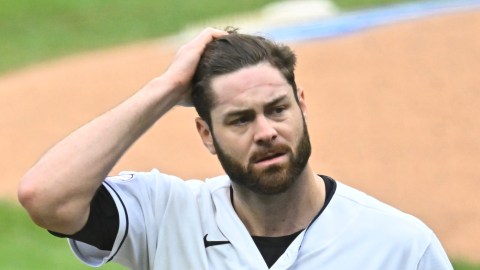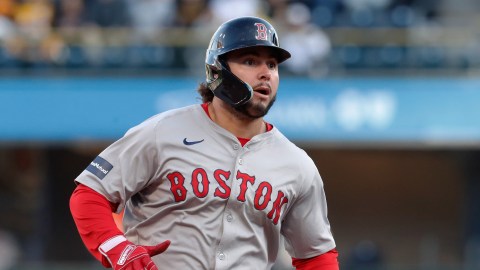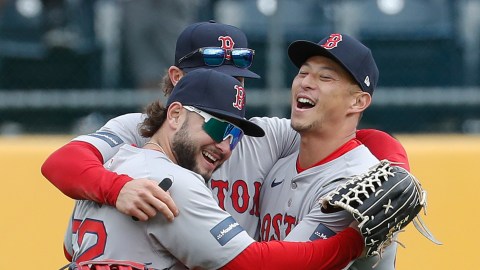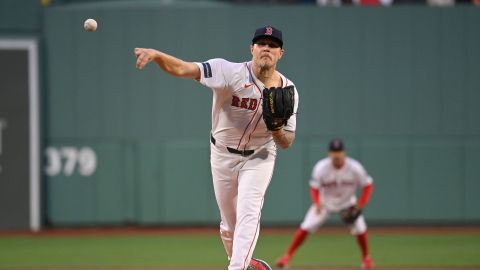A common reaction after Josh Beckett was hit in the head with an errant ball during batting practice early this month went something like this: “It’s amazing it doesn’t happen more often.”
Most of those who uttered such words weren’t necessarily referring to Beckett’s exact situation — he was struck in the head by a ball off the bat of staffer Ino Guerrero, who was hitting the ball back in toward the infield with a fungo bat, a truly random episode. They were simply referring to the sport as a whole, which has more flying objects and fewer players with any form of protection than just about any other game out there.
It makes such incidents inevitable. From Ray Chapman to Herb Score to Bryce Florie to Bobby Wilson, most of these occasions over the years have involved pitchers or catchers. Some, like those of Justin Morneau and Jason Bay a year ago and that of Toronto second baseman Aaron Hill in 2008, can take place in other everyday activities all over the diamond. Nobody needs to remind Mike Cameron or Carlos Beltran that the perils of the game are not limited to home plate and the pitcher’s mound.
While baseball may not be considered a contact sport, there is no shortage of occasions when projectiles traveling at incredible speeds meet heads covered by no more than a piece of cloth, or when freak collisions cause severe trauma. That, my friends, is contact, and efforts on the part of Major League Baseball to protect those with concussions is not only necessary, it might be overdue.
Because of the nature of sports like football and hockey, which see players suffer head injuries on a rather regular basis, they have taken the lead in the institution of such regulations. Baseball, and other sports that are/were behind on the issue, have been forced to play follow-the-leader. However, any that continue to lag behind or are not taking prevention or protection as far is it can are missing the point. Those sports are setting themselves up for a why-didn’t-we-think-of-that moment.
At the very least, baseball has given itself some protection going forward. One wonders how many players suffered, or are suffering, because of the lack of regulations in prior days.
Former catcher Mike Matheny was forced to retire after taking a series of foul tips off his mask in a short period of time in 2006, forcefully playing through the fuzziness that followed and then finally bottoming out and going to see the trainer. When he did, Matheny said he felt like a “baby,” for the game was taught to him as one in which you play hurt.
Matheny never played again. One wonders if he had sought help after the first sign of grogginess if his career, or what was left of it, might’ve been spared.
That’s only one example, but others like it have only come to the surface in the past five years or so, as awareness of the issue has been heightened. That leaves well over a century of baseball in which players discussed concussions as often as they did nail polish and eyeliner. Essentially, never.
Still, concussions are, in a way, the great unknown. Those suffering from them can look perfectly fine to the casual observer. Heck, they may not even understand their own symptoms, even if they’re severe. And the long-term impact of concussions has just become known in recent years.
Who knows what might’ve happened if the Minnesota Twins, locked into a race for the AL Central, had rushed back Morneau in an effort to squeeze a few late-season at-bats out of a guy in a sensitive situation.
If Jason Bay tried to come back after suffering his concussion last July to play for a floundering Mets team, he might never have the opportunity to return to the form that got him a $66 million contract in the first place.
Baseball began to get it right by having enough knowledge and testing in place so that these guys were held back. It has taken another major step in instituting the new regulations.
Beckett was afforded all the time in the world due to the fact that his concussion occurred so early in spring training, and it was relatively minor. However, he admitted that last spring, when he suffered with a bout of the flu, he raced back a tad early because he knew he had to get his work in with Opening Day fast approaching and the right-hander having already missed some time.
If his concussion had taken place three weeks later in the spring and it happened to be 1976, we might’ve seen Beckett pitching through headaches and blurred vision, and who knows how that might’ve affected his season, his career or his life.
How many players suffered those effects in years past is immeasurable. Now, at the very least, one can safely assume that the number will go down.
No longer can a player be listed as “day-to-day” with a concussion, and baseball is better off because of it.
Do you think baseball has done enough to regulate the management of concussions? Leave your thoughts below.



